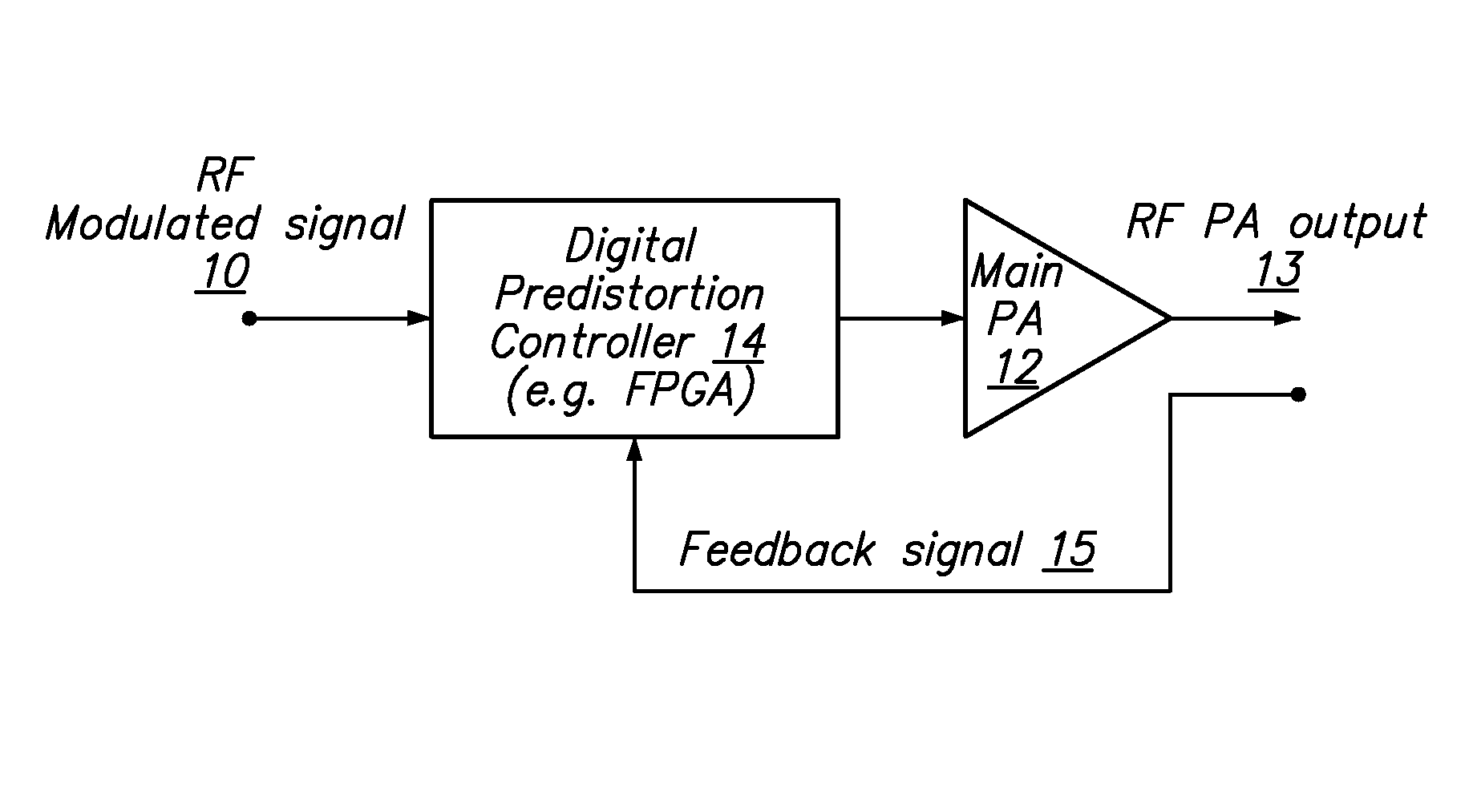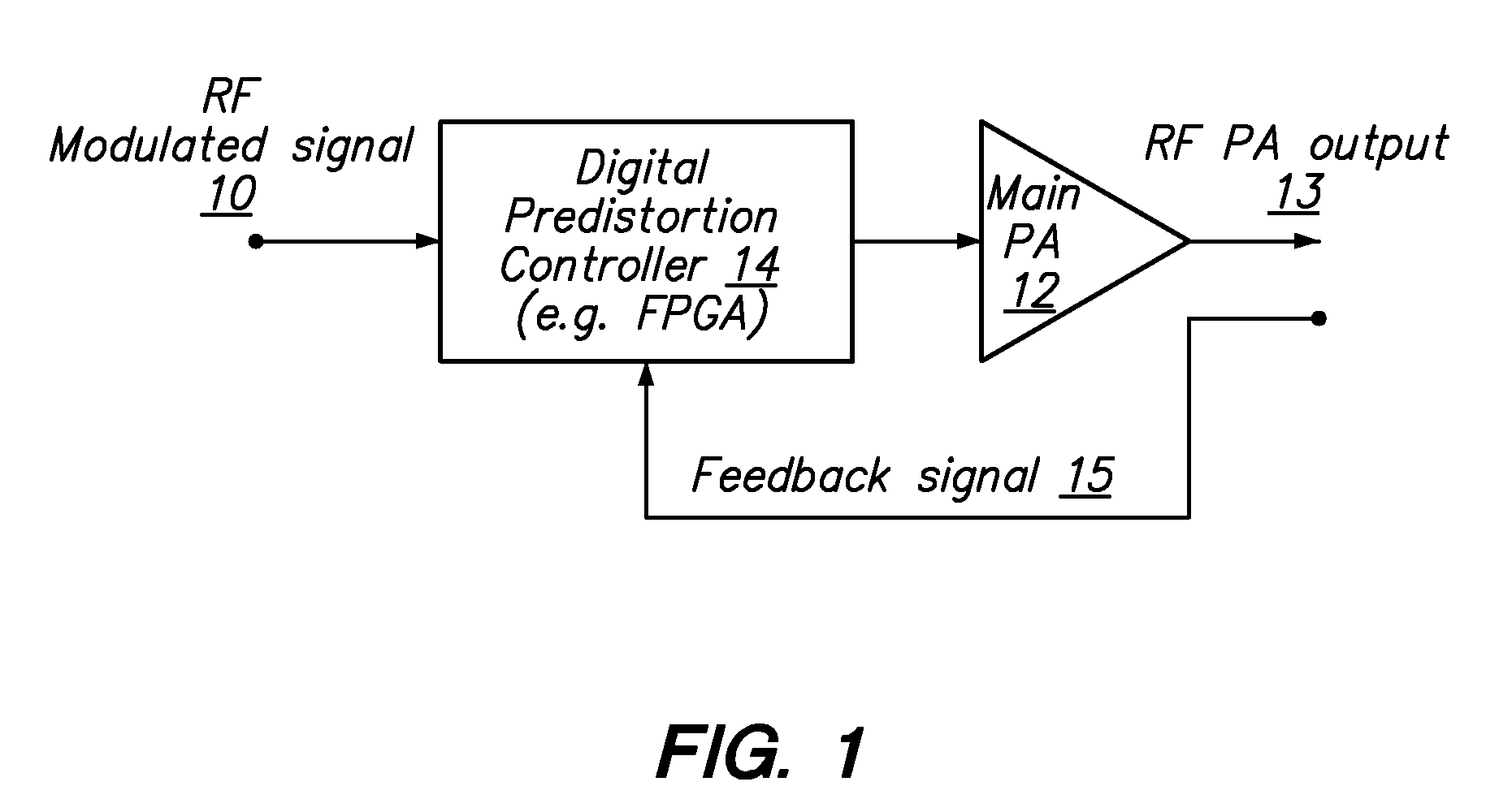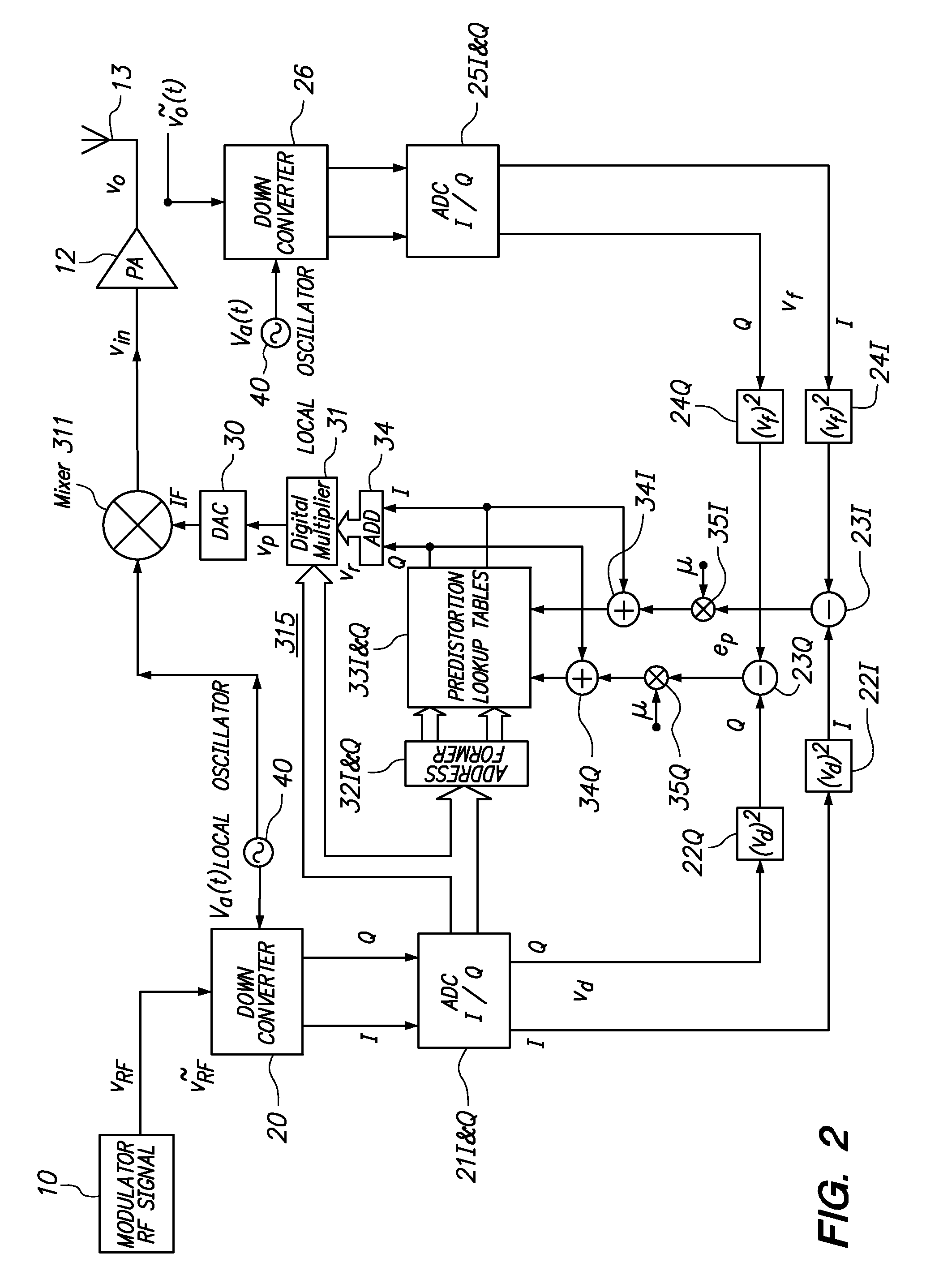Digital hybrid mode power amplifier system
a power amplifier and hybrid mode technology, applied in the field of wireless communication systems, can solve the problems of high cost, high cost, and inability to meet the needs of high-frequency amplifiers, and achieve the effects of high linearity, high efficiency, and high performan
- Summary
- Abstract
- Description
- Claims
- Application Information
AI Technical Summary
Benefits of technology
Problems solved by technology
Method used
Image
Examples
Embodiment Construction
[0024]The present invention is a novel RF-in / RF-out PA system that utilizes an adaptive digital predistortion algorithm. The present invention is a hybrid system of digital and analog modules. The interplay of the digital and analog modules of the hybrid system both linearize the spectral regrowth and enhance the power efficiency of the PA while maintaining or increasing the wide bandwidth. The present invention, therefore, achieves higher efficiency and higher linearity for wideband complex modulation carriers.
[0025]FIG. 1 is a high level block diagram showing the basic system architecture which can be thought of, at least for some embodiments, as comprising digital and analog modules and a feedback path. The digital module is the digital predistortion controller 14 which comprises the PD algorithm, other auxiliary DSP algorithms, and related digital circuitries. The analog module is the main power amplifier 12, other auxiliary analog circuitries such as DPA, and related peripheral...
PUM
 Login to View More
Login to View More Abstract
Description
Claims
Application Information
 Login to View More
Login to View More - R&D
- Intellectual Property
- Life Sciences
- Materials
- Tech Scout
- Unparalleled Data Quality
- Higher Quality Content
- 60% Fewer Hallucinations
Browse by: Latest US Patents, China's latest patents, Technical Efficacy Thesaurus, Application Domain, Technology Topic, Popular Technical Reports.
© 2025 PatSnap. All rights reserved.Legal|Privacy policy|Modern Slavery Act Transparency Statement|Sitemap|About US| Contact US: help@patsnap.com



